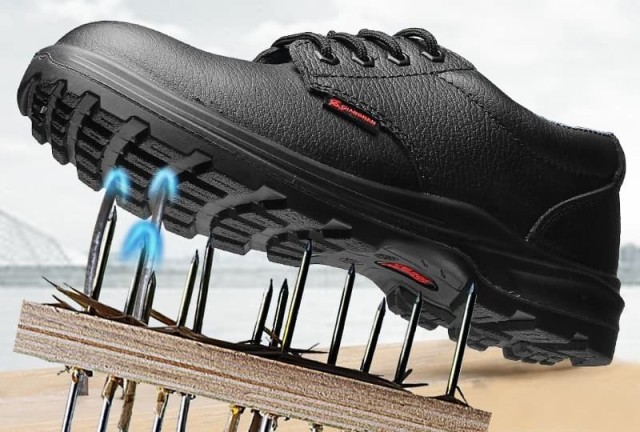Workplace safety begins from the ground up—literally. Selecting the right protective footwear isn’t just about comfort; it’s about matching ASTM standards to your industry’s specific risks. Whether you’re navigating electrical hazards, heavy machinery, or puncture threats, understanding ASTM F2412-18a and F2413-18 ensures compliance and long-term protection.
Understanding ASTM F2412-18a and F2413-18
How ASTM Safety Codes Address Specific Workplace Risks
ASTM standards classify footwear based on performance rather than materials. The two key standards are:
- ASTM F2412-18a: Defines testing methods for impact resistance, compression, and other hazards.
- ASTM F2413-18: Specifies minimum requirements for protective features, marked via codes (e.g., "I/75" for impact resistance).
For example, electrical hazard (EH) boots must block up to 18,000 volts for one minute, using non-conductive materials like rubber soles and plastic shanks. OSHA directly references these standards, making compliance non-negotiable for employers.
Testing Methods Behind ASTM Certification
Every ASTM-certified shoe undergoes rigorous lab tests:
- Impact Resistance: A 75-lb weight dropped from 1 inch (I/75 rating).
- Compression: 2,500 lbs of pressure on the toe area (C/75).
- Puncture Resistance: A 120-lb force applied to a sharp object penetrating the sole.
These tests ensure footwear performs under real-world conditions—like a steel toe cap surviving a falling beam.
Selecting the Right Footwear for Your Industry
Construction and Heavy Machinery: Prioritizing Impact/Compression Resistance
For construction workers, ASTM’s I/75 and C/75 ratings are critical. Look for:
- Steel or composite toe caps.
- Slip-resistant outsoles (marked "SR").
- Metatarsal guards (MT) if handling heavy materials.
Did you know? ASTM standards outperform ISO 20345 in compression testing, making them stricter for U.S. workplaces.
Electrical Work: Navigating EH and SD Requirements
Electricians need EH-rated boots with:
- No metal components (shanks, eyelets).
- Static-dissipative (SD) properties to prevent sparks.
OSHA’s alignment with ASTM means EH boots meeting F2413-18 automatically comply with workplace regulations.
Oil and Gas: Balancing Static Dissipation and Puncture Resistance
In explosive environments, footwear must:
- Dissipate static electricity (
- Resist punctures from nails or sharp debris (PR rating).
Pro tip: Avoid conductive materials like metal toe caps in these settings.
Ensuring Compliance and Long-Term Safety
- Check Labels: ASTM-compliant footwear displays codes (e.g., "ASTM F2413-18 EH").
- Audit Regularly: Replace boots showing wear in soles or toe caps.
- Train Teams: Educate workers on decoding ASTM symbols and proper fit.
Safety footwear isn’t a one-size-fits-all solution—it’s a tailored defense against workplace risks.
Upgrade Your Safety Standards with 3515
As a trusted manufacturer for distributors and bulk buyers, 3515 delivers ASTM-compliant footwear engineered for your industry’s hazards. From EH-rated boots to puncture-resistant soles, our solutions combine rigorous testing with real-world durability. [Contact us] to equip your workforce with protection that meets—and exceeds—safety benchmarks.
Related Products
- Customizable Anti-Smash Safety Boots for Wholesale & Private Label Manufacturing
- Safety Footwear Wholesale Manufacturer for Custom OEM/ODM Production
- Wholesale Safety Footwear Manufacturer for Bulk & Custom OEM Orders
- Wholesale Anti-Smash & Puncture-Proof Safety Shoes Custom Manufacturing for Brands
- Puncture-Resistant Velcro Safety Boots for Wholesale & Custom Manufacturing
Related Articles
- How to Choose Safety Footwear That Solves Steel Toe Shoe Problems Without Sacrificing Protection
- How Steel Toe Shoes Prevent Injuries: The Science Behind Workplace Safety
- Steel-Toe Boot Safety: Separating Fact from Fiction
- Steel Toe Work Boots: Balancing Safety and Comfort for Demanding Jobs
- How to Choose Steel Toe Shoes That Balance Safety and Comfort



















